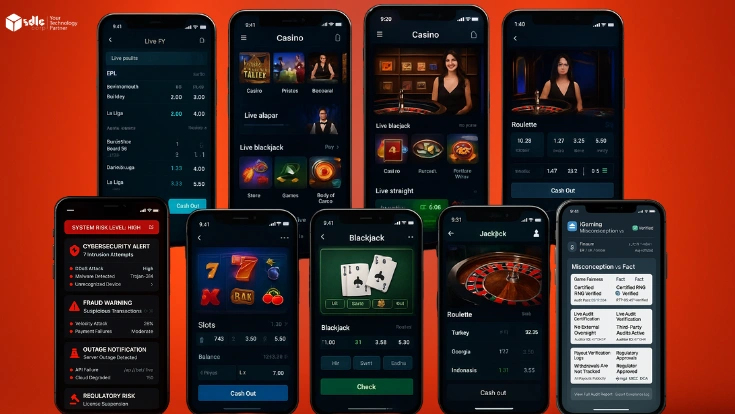Introduction
In an era where data fuels economies and innovation, safeguarding it has become paramount. Data breaches are no longer rare; they’re systemic challenges jeopardizing individuals, businesses, and governments. Blockchain technology has emerged as a transformative solution to this crisis. At its core, blockchain developers are the architects driving this change, implementing robust security measures to prevent unauthorized access and breaches.
Blockchain development companies are pivotal in enabling this innovation, empowering developers with resources to build secure systems. These developers are reshaping cybersecurity with advanced cryptographic techniques, decentralized storage, and secure consensus protocols. Let’s explore how their contributions prevent data breaches while addressing current and future challenges.
Jump Into Action: In Blockchain Development

1. Why Data Breaches Demand a Paradigm Shift
The Scale of the Problem
Data breaches are growing in frequency and severity, with billions of records exposed annually. Centralized databases are especially vulnerable, as a single point of failure can compromise vast amounts of sensitive information.
Blockchain, with its decentralized and tamper-proof architecture, offers a revolutionary approach. Unlike traditional systems that place trust in a single entity, blockchain spreads responsibility across a network. This decentralized structure, combined with cutting-edge cryptographic methods, drastically reduces the risk of breaches.
Take the example of Estonia’s e-Residency program, which uses blockchain to secure citizens’ digital identities. By decentralizing sensitive data, the system has successfully thwarted cyberattacks while maintaining user privacy.
2. Cryptography: The Foundation of Blockchain Security
Cryptography is at the heart of blockchain’s resilience. It is an ancient practice modernized to protect digital systems. Blockchain developers use cryptographic methods to ensure data remains private, tamper-proof, and secure.
a) Public and Private Keys: Securing Communication
Public key cryptography enables secure interactions between users. Each participant has a public key for sharing and a private key for confidentiality. For instance, when users send cryptocurrency, their private key “signs” the transaction, ensuring authenticity. This method is crucial in protecting sensitive data from unauthorized access.
b) Hashing: The Immutability Engine
Hashing transforms data into unique, fixed-length strings. Even a minor alteration in the input creates a vastly different hash, making tampering easily detectable. Developers often compare it to sealing a letter with a unique wax imprint. If the seal is broken, you know the contents have been tampered with.
c) Zero, Knowledge Proofs: Privacy Without Compromise
Zero-knowledge proofs (ZKPs) allow one party to prove they know a piece of information without revealing it. Imagine proving you’re over 18 without sharing your birthdate. Developers leverage ZKPs in areas like healthcare, enabling identity verification while safeguarding sensitive patient data.
3. Decentralized Storage: Eliminating Single Points of Failure
The Problem with Centralization
Centralized systems store data in a single repository, making them attractive targets for hackers. Blockchain developers counter this by distributing data across networks.
a) Distributed Ledgers: Redundancy as a Shield
In a distributed ledger, copies of data exist across multiple nodes. If an attacker compromises one node, the network quickly identifies discrepancies and rejects the malicious changes.
b) IPFS: A Breakthrough in Data Management
The InterPlanetary File System (IPFS) complements blockchain by splitting files into smaller chunks and storing them across a decentralized network. This method ensures that the data remains secure even if one part of the network is compromised. For example, IPFS was used to secure COVID-19 vaccine supply chains and track the authenticity of doses globally.
c) Layered Encryption
Developers encrypt data before distributing it, adding an extra layer of security. This ensures that even if a hacker accesses data fragments, they remain unreadable without the decryption keys.
Tailored Blockchain Development Services for Your Needs
Tailored solutions for your business needs.

4. Consensus Protocols: The Guardian of Integrity
What Are Consensus Protocols?
Consensus mechanisms allow blockchain networks to agree on the validity of transactions without a central authority. Blockchain developers design these protocols to ensure malicious actors cannot disrupt the system.
a) Proof of Work (PoW): Security Through Effort
PoW requires participants to solve computational puzzles, making attacks computationally expensive and nearly impossible. Bitcoin, the pioneer of blockchain, uses PoW to secure its transactions.
b) Proof of Stake (PoS): Economic Incentives for Security
PoS rewards participants based on the cryptocurrency they “stake.” Misconduct leads to penalties, making foul play costly. Ethereum’s recent migration to PoS highlights its scalability and reduced energy consumption.
c) Byzantine Fault Tolerance (BFT): Handling Malicious Nodes
BFT protocols allow networks to function securely even when some nodes act dishonestly. Developers often explain this with a simple analogy: Imagine a group of generals communicating to coordinate an attack. Even if some generals are traitors, the group must find a way to agree on a single plan.
5. Keeping Unauthorized Access at Bay
Real, Time Role, Based Access Control
Blockchain developers implement systems like Role Based Access Control (RBAC) to ensure users access only what they’re authorized to. This method is widely used in enterprise blockchains, like Hyperledger, where sensitive corporate data must be tightly controlled.
Multi, Signature Wallets: Adding Layers of Approval
Multi-signature wallets require multiple private keys to approve transactions, reducing the risk of unauthorized access. For example, a transaction might require the approval of the CFO and compliance officer in financial institutions.
Smart Contracts: Automating Trust
Smart contracts are pre-programmed agreements that execute automatically when conditions are met. They enhance security by removing the need for manual intervention and reducing the risk of human error or manipulation.
6. Challenges Blockchain Developers Face
Scalability
Blockchains like Bitcoin can process only a limited number of transactions per second. To address this issue, developers are working on Layer 2 solutions like Lightning Network.
Regulatory Compliance
Governments worldwide have varying regulations for blockchain systems. Developers must navigate these complexities to ensure compliance without compromising security.
Interoperability
Another challenge is ensuring that different blockchain systems can communicate seamlessly. Developers are exploring solutions like cross-chain protocols to bridge this gap.
Jump Into Action: Hire a Blockchain Developer
Our team of expert Blockchain developers is on hand to assist you.

7. Future Trends: The Road Ahead
Quantum, Resistant Cryptography
The rise of quantum computing threatens current cryptographic methods. Blockchain developers are researching quantum, resistant algorithms for future proof-of-concept blockchain security.
AI Integration
Artificial intelligence is being used to identify vulnerabilities and predict potential breaches, enhancing the overall resilience of blockchain systems.
Conclusion
Blockchain developers are the cornerstone of modern cybersecurity. They leverage their expertise to build systems that protect sensitive data and inspire trust. From securing global vaccine supply chains to safeguarding financial transactions, their contributions are revolutionizing how we think about data protection.
If your organization wants to adopt cutting-edge security solutions, it’s time to hire blockchain developers who can design and implement robust, future-proof systems. With blockchain, the future of cybersecurity is not just secure; it’s transformative.

















